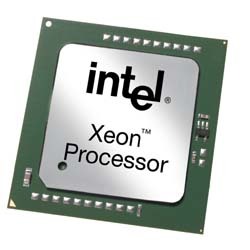Intel: Xeon to remain best performing chip in certain threaded apps
Hillsboro (OR) - Dual-core processors will offer tremendous performance potential, but will largely represent an investment in the future for now. To take advantage of the new technology users will have to run multithreaded applications - and even then a Pentium D chip may not be the fastest desktop chip Intel offers: If you have money to spare, a Xeon DP may be your best bet, the company said.
Just when we all were convinced that there is little innovation in processors beyond ever increasing clock speeds and a clock efficiency left, AMD and Intel surprised us not too long ago with an announcement to initiate a transition from single-core to dual- and multicore products. In fact, dual-cores may be the single most important innovation for the industry in more than 20 years, offering a performance potential that only can be vaguely described at this time.
The downside of these new chips, at least for now, is that it is just a "potential". Applications need to support dual-cores and threading in order to accelerate tasks. Admitted, Windows XP already displays this in an impressive way by running multiple applications simultaneously at full speed, but other software is rather scarce in the consumer segment at this time. When the Pentium D (Smithfield core) will be introduced, some users may be disappointed by the speed increase the processor shows in most consumer applications and in games.
Not only do those chips often ship with twice the cache, but will also run more threads at the same time. "System performance is not just a frequency game, but a platform experience," said Jerry Braun, manager in Intel's volume platform product marketing group. "Highly threaded applications such as Photoshop and video editors perform extremely well with Xeon DP systems." Of course, the processor is a bit pricier than Smithfields: Dual Xeon DP chips will cost somewhere between $910 (3.2 GHz) and $1700 (3.6 GHz), compared to a more Pentium 4-like pricing of the Pentium D and the $1000 of the Pentium Extreme Edition.
According to Larry Gray, senior, performance analyst for Intel's enterprise platform performance group, the processor in the end may lose in importance over time and users will have to look more to a platform level to decide which technology offers the highest speed in specific environments. This could even mean for geeks that not a desktop processor, but a typically enterprise-aimed Xeon could be the processor of choice, Braun said.
In contrast to the consumer space, multithreading is quite common in enterprise applications. Software in this segment is often capable of threading. Accordingly, AMD decided to offer its dual-cores first for workstations and servers. Intel, however, is hitting with Smithfield the consumer first and not the market where applications are widely available. In a conversation with Intel representatives, the company conceded that it makes "absolutely makes sense" to first hit the corporate market. Xeon will have to wait however until the platform is ready: "We would do the same as AMD, if we could. But you need to be able to intercept a platform at the right time and this was not the case here," Gray explained. For example, Intel plans to offer support of FB-DIMMs at the time of the introduction of Xeon dual-cores.
Get Tom's Hardware's best news and in-depth reviews, straight to your inbox.

Wolfgang Gruener is an experienced professional in digital strategy and content, specializing in web strategy, content architecture, user experience, and applying AI in content operations within the insurtech industry. His previous roles include Director, Digital Strategy and Content Experience at American Eagle, Managing Editor at TG Daily, and contributing to publications like Tom's Guide and Tom's Hardware.
